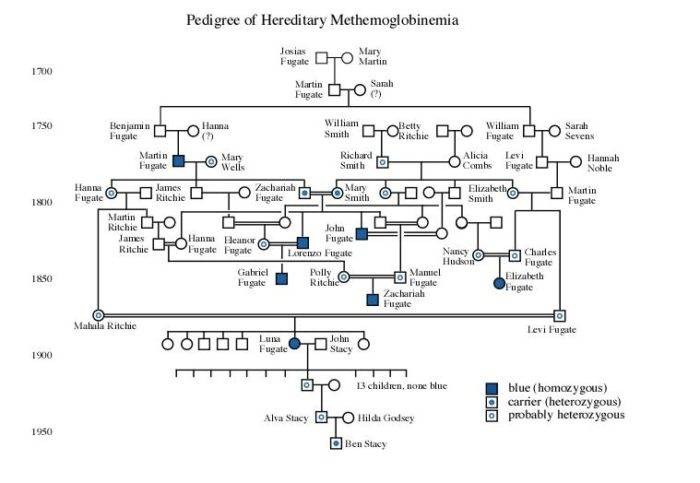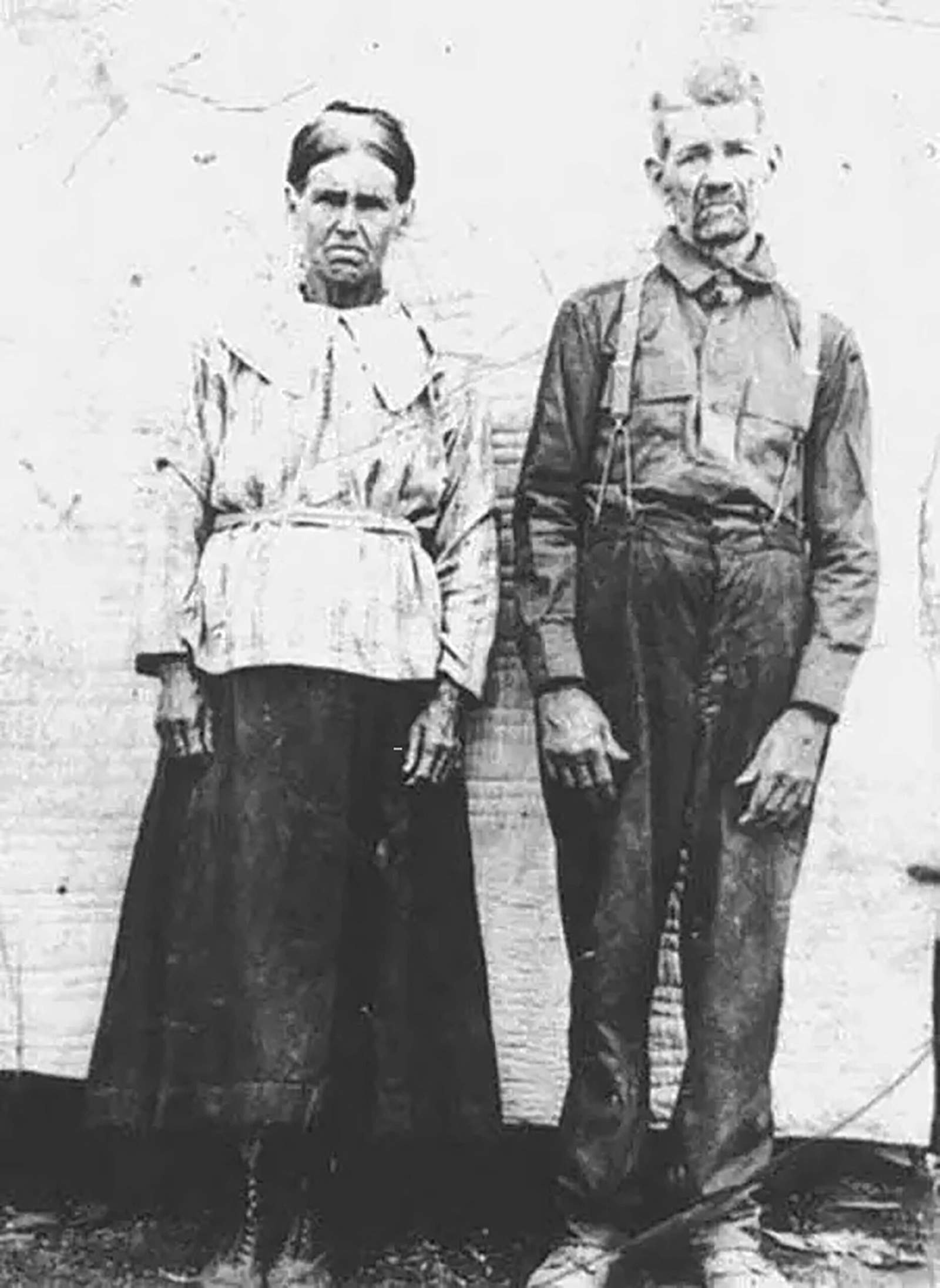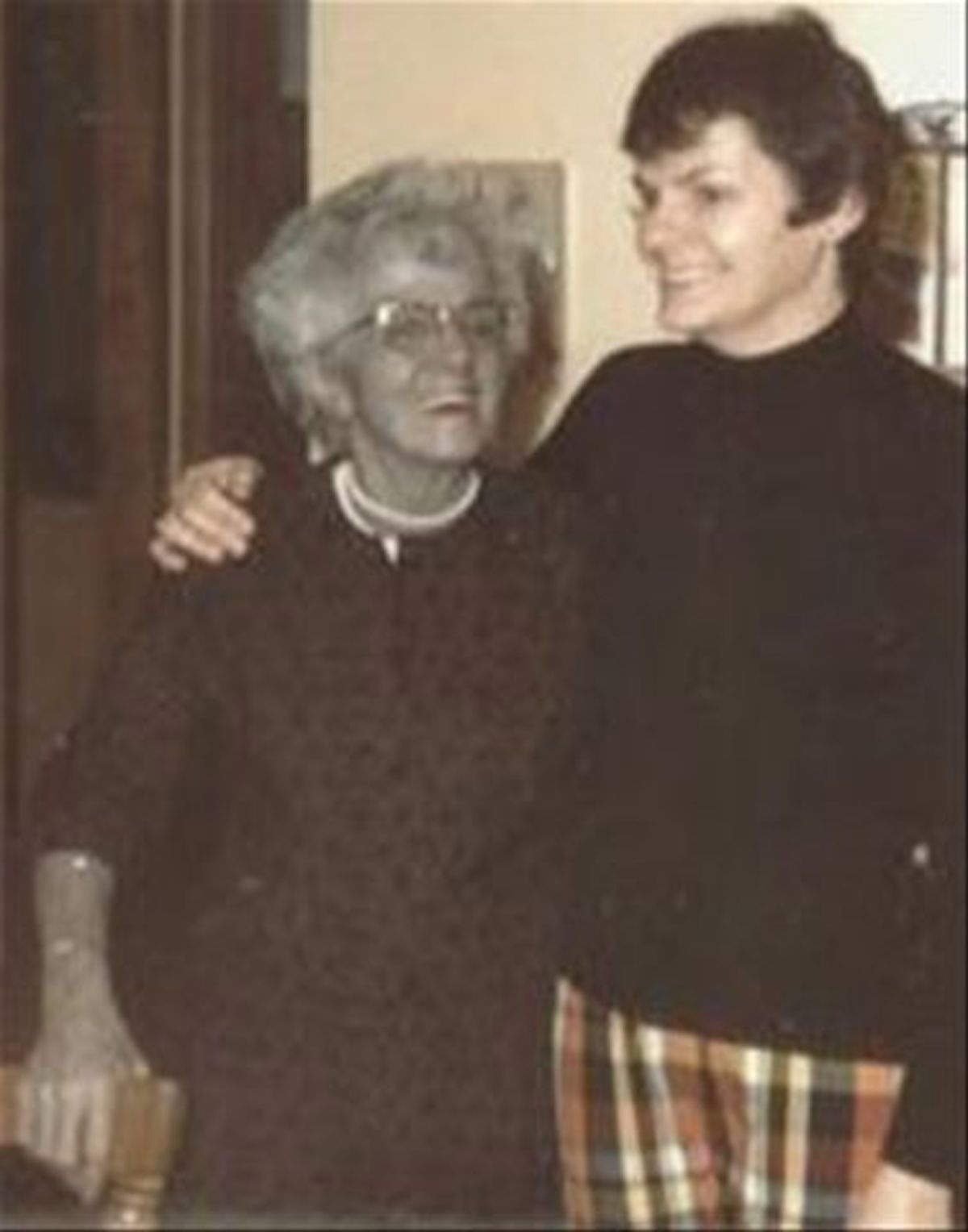Secrets Of The Blue Fugates, The Family With Blue Skin
When one considers a blue person, it is often thought of as fantasy, such as the plight of Violet Beauregard of “Charlie and the Chocolate Factory” fame or James Cameron’s “Avatar,” with its world of blue people.
The idea of someone turning blue seems to belong in the realm of fiction. Yet, deep in the quiet hill country of Eastern Kentucky, a family’s rare genetic mutation turned what many would consider fantasy into a living reality.
For nearly two centuries, the story of the “Blue Fugates” has captivated the attention of doctors, scientists, and curious minds around the world.
Keep scrolling down to discover the fascinating story of the Blue Fugates, a family that, in the words of locals, were “bluer than Lake Louise.”
The origins of the Fugate family

The tale of the Blue Fugates begins with Martin Fugate, a French orphan who immigrated to the United States in the early 19th century.
In 1820, he made his home in the remote hills of eastern Kentucky along Troublesome Creek. Life in this rugged landscape was challenging, and the community was small and tightly knit.

Martin married Elizabeth Smith, a local woman described as being as pale as the mountain laurel that bloomed in the spring. Neither of them knew that they both carried a recessive gene for a rare blood disorder.
The isolated life of the Fugates

Eastern Kentucky in the 19th century was a region of profound isolation. The area was mountainous and difficult to access, with few roads and no railroad connections until the early 20th century.
As a result, the community around Troublesome Creek remained largely cut off from the outside world.

This geographic isolation had significant implications for the Fugate family. With few outsiders coming into the community, the Fugates often married within their own bloodline or with other nearby families who were also isolated.

“It was hard to get out, so they intermarried,” said Dennis Stacy, an amateur genealogist and descendant of the Fugates. “I’m kin to myself.”
The intermarriage perpetuated the blue skin trait, as it increased the likelihood that children would inherit the recessive gene from both parents.
Methemoglobinemia: The science behind the blue skin

Methemoglobinemia is a blood disorder in which an abnormal amount of methemoglobin, a form of hemoglobin that is blue and nonfunctional, is produced.
In healthy individuals, hemoglobin binds with oxygen in the blood and gives it a red hue, which then shows through the skin as a pinkish tint.

However, in those with methemoglobinemia, the methemoglobin cannot carry oxygen effectively, and the blood takes on a blue color, which is then reflected in the skin.
For methemoglobinemia to manifest, both parents must carry the recessive gene for the condition.

In the case of the Fugates, Martin and Elizabeth’s marriage, followed by the marriages of their descendants within the small, isolated community, allowed this recessive gene to be passed down and expressed repeatedly.
As the generations passed, the blue skin became a hallmark of the Fugate family. Despite their unusual appearance, the Fugates lived relatively normal lives within their community. According to residents, “They looked like anybody else, ‘cept they had the blue color.”
How science turned blue skin pink

By the mid-20th century, blue skin became a source of embarrassment for some Fugates, as it was often associated with the stigma of inbreeding.
In the early 1960s, several family members sought medical help from Dr. Madison Cawein, a hematologist at the University of Kentucky.

Drawing on research conducted on isolated Alaskan Eskimo populations, Cawein identified the cause of the blue skin as methemoglobinemia.
He also discovered that the condition could be treated with methylene blue dye, a substance that converted methemoglobin back into functional hemoglobin.

The treatment was surprisingly effective. After ingesting the methylene blue, the blue color of the Fugates’ skin quickly faded to a healthy pink. This treatment allowed many in the family to live without the social stigma associated with their blue skin.

“They were really embarrassed about being blue,” Cawein recalled. “Patrick was all hunched down in the hall. Rachel was leaning against the wall. They wouldn’t come into the waiting room. You could tell how much it bothered them to be blue.”
Are there still blue Fugates living in Kentucky?

The last notable case of a blue-skinned Fugate was Benjy Stacy, born in 1975. His blue skin at birth startled doctors and nurses, but it gradually faded as he grew older.
By the age of seven, Benjy’s skin had almost entirely returned to a normal hue, a sign that he had only inherited the gene from one parent.
Today, most descendants of the Fugates no longer exhibit blue skin. But the story of their family continues to capture the imagination.

